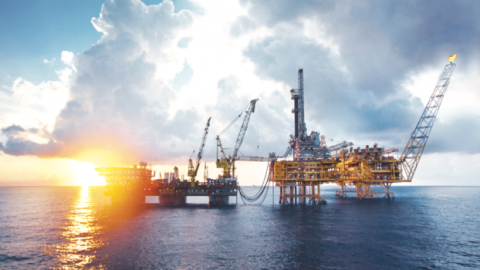
Illustration
It is impossible to look at a technology with all its advantages, but also to look at their shortcomings.
The pros and cons of predictive maintenance
One of AI’s most influential applications in the oil and gas industry is machine learning, thanks to its ability to help companies monitor their assets or equipment systems. In any space where reasonably high-quality data exist over a period of time, machine learning can be applied to identify detailed information. This opens up predictive maintenance.
By adopting these techniques Airey said, “we can look at historical signal information around the different components of a device. We create an information map that can then tell us if different assets or devices are working not the way we expected them or if there is an unexpected problem”.
The historical information about an unintended accident can then be added to the mix to look for indicators that indicate an imminent problem. As Airey noted, this helps the company maintain the smooth running of the device. If we look at the results that we have had in the process, we may have anything up to 14 days we can anticipate unexpected operational incidents. That makes sense to us because it gives us time to fix or do something with it.
Although this kind of predictive maintenance may look like a magic wand and has even been applied elsewhere in the organization, BP’s information technology still has shortcomings of this technique. Most importantly, it can only be applied in areas of good data and historical quality. When an incident has not occurred before, the data cannot support what is happening. This makes it impossible to make predictions. As Airey said, “If you don’t have the data, it’s very difficult to forward predict”.
More intensive ability
As an example of the use of BP’s deep learning techniques, Airey cited quality inspections as an important part of any oil company safety process.
We have an inspection and maintenance teams looking at these important components, he said, to understand if they only have any degradation in them like corrosion. We need to know what happens to salt corrosion over time. Is it in a static state, does it get worse?
In order to fulfill the obligation of complete quality control, the vessel needs to be thoroughly inspected. This can present a significant challenge, especially if the ship is in a harsh environment.
“We put people there if we can, ” states Airey. “However, in some of our undersea devices we run long video streams, taking pictures of what happens. We then went through a process of reviewing the footage almost frame by frame, to see if there were any anomalies we wanted to investigate further. This is not just about people, but you can imagine focusing on tasks that are difficult to accomplish.
By developing deep learning techniques, management teams can instead have a computer looking at pictures. In some conceptual effective evidence, DIO has provided deep learning systems with thousands of images of intact and eroded property devices. This allows the computer to find out what corrosion usually looks like and independently identify areas of interest when faced with unseen footage. Combining the machine’s intensive learning system with human expertise in this way increases the likelihood that the damage will be detected.
So can machines in the future be smarter than humans, or can we teach machines to be smarter than us and this?